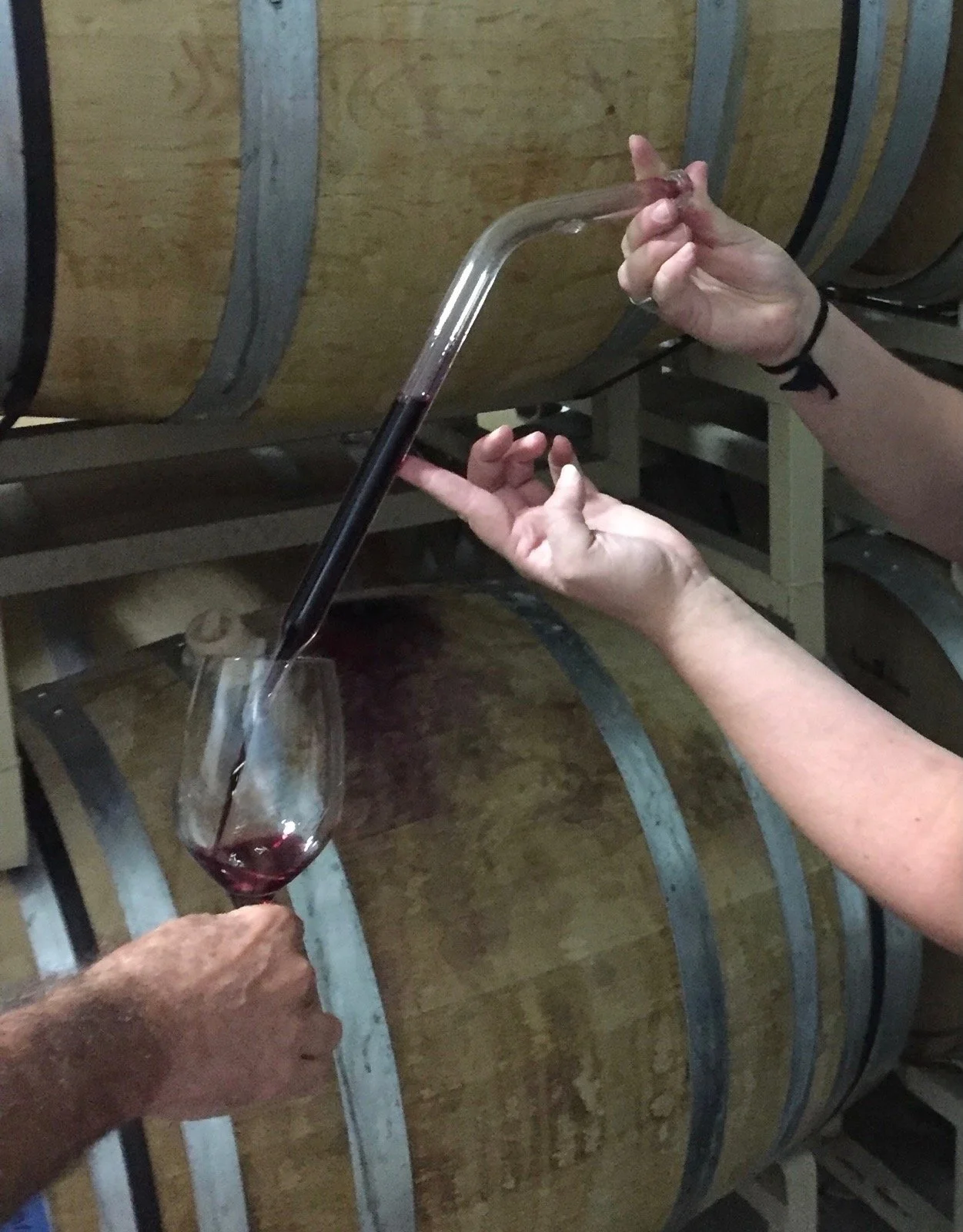A wine maker using a Wine Thief to remove wine from a barrel for tasting
Winemakers rely heavily on their senses of smell and taste to evaluate the evolution of their wine from the grapes in the vineyard to the final product that goes in the bottle. While part of this process is science, a significant part is an art that wine makers develop over years of training and experience.
This training and experience are used throughout the wine making process. While there is science (i.e., chemistry) involved, the wine makers use their senses throughout the process:
In the vineyard, they can measure the grape’s sugar and acid levels, but a trained wine maker will also inspect the grapes, break them open, taste the juice, taste the seeds and evaluate the tannin
During fermentation, a wine maker will be constantly tasting the wine as the grape’s natural sugars convert to alcohol
Once the fermentation is complete, the wine maker is again smelling and tasting the wine as it ages
If the wine is being aged in oak, the wine maker will be evaluating how the flavors of the oak are integrating with the wine
Following aging, many wine makers will blend their wines in order to achieve the final aromas and tastes desired
Just prior to bottling, the wine maker will ensure the wine is properly filtered (or not) and ensure that the bottles and bottling process are clean and ready to go
I have always loved the words of a wine maker that I met early in my wine adventures who said that “Making wine is easy. Making good wine is hard.” It is the artistic side of wine makers that make the difference between an ordinary bottle of wine and an outstanding bottle of wine. Cheers!


